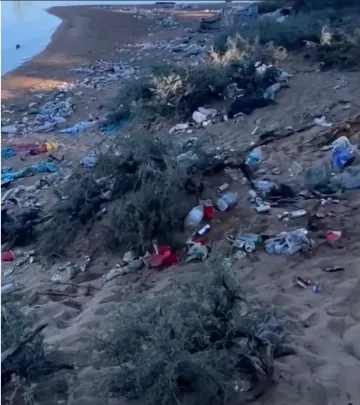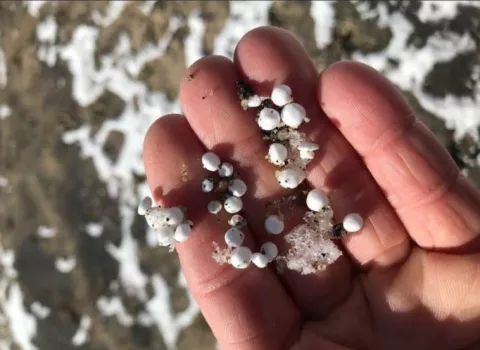Plastic Waste Information
Several research studies have shown that Lake Tahoe has quite a lot of plastics in the lake with most of the plastic coming from food containers, bottles, plastic bags, and toys. A particular study done with the University of Nevada, Reno (UNR) revealed that Lake Tahoe was ranked the third highest in plastic levels out of the 38 lakes used for the study. The top 3 lakes with high plastic levels found that the plastic concentrations were higher in the lakes compared to the concentrations on the surface water at the ocean's gyres.

Depending on the plastic item, the breakdown of said items vary: cigarette butts take up to 10 years, plastic bags take 20 years, styrofoam cups can take 50 years, aluminum cans can take 200 years, plastic beverage holders take 400 years, plastic bottles and disposable diapers can take 450 years, and a strand of fishing line can take 600 years. From the same UNR study, larger lakes that can hold water for a longer time than a small, shallower system can also impact the accumulation of plastic debris and for Lake Tahoe that would mean if a plastic item enters the system, the item can be in the lake for up to 650 years due to the lake acting as a trap for these items to accumulate in.
Media and Presentations
Tobi Tyler, a leader with our group, has written an op-ed in the Reno Gazette Journal about microplastics in the Reno-Tahoe area, and policy mechanisms for protecting Lake Tahoe. She calls on the Tahoe Regional Planning Agency to ban certain plastics in the Tahoe Basin.
We've also previously had Rachel Kozloski and Hannah Lukasik, researchers with the Desert Research Institute, join us at one of our monthly meetings to talk about plastics, their presences in the environment, and the implications microplastics have for the Lake Tahoe area. Watch the recorded virtual presentation here.

What Can You Do?
There are various ways we can reduce our own personal plastic waste. Here are some solutions to consider:
- Bring your own reusable item to replace the single-plastic item. Items to think about that you could use: reusable foodware utensils, reusable bags including reusable produce bags, and your own reusable water bottles.
- You can even go as far to see if restaurants will let you use your own foodware containers to avoid using the often plastic or styrofoam to-go boxes.
- There are programs and organizations that help provide reusable to-go boxes to help businesses become more sustainable and within the Tahoe Basin there is one that exists in Truckee through Keep Truckee Green.
- You can even go as far to see if restaurants will let you use your own foodware containers to avoid using the often plastic or styrofoam to-go boxes.
- Don't buy single teabags and coffee pods that potentially are made from plastic. Try to buy loose leaf tea and a reusable coffee pod.
- Use other means for transportation such as biking, carpooling, or using public transportation to avoid the wear of the rubber in tires.
- Try to thrift more often to help reduce getting more synthetic clothing that potentially have plastic within the fibers.
- Caring for synthetic clothing: wash these clothings less and use high-efficiency cycles.
- Use products that can catch microfibers in your washer, dryer, or filters on your washer lines.
- Support plastic management reform.
Actions
National
The Break Free From Plastic Pollution Act is comprehensive legislation that holds the big plastic manufacturers and polluters responsible, rather than consumers or communities. It pauses construction on any new plastic-making facilities. It begins to phase out single-use plastic products that aren't recyclable.
Add your name! https://tinyurl.com/SCplasticAction
Local
Go out and support the single-use plastic bans going in effect and encourage the Tahoe Regional Planning Agency to start taking the plastic litter issue seriously and propose a lake wide ban to single-use plastics.
There has been some actions done within the Lake Tahoe basin such as the City of South Lake Tahoe's single-use plastic water bottle ban amended in 2022 and Town of Truckee's single-use water bottle reduction ordinance (adopted in 2024). However, we believe for these bans to be more effective for the environment there needs to be a unified basin ban which can be done by the Tahoe Regional Planning Agency.